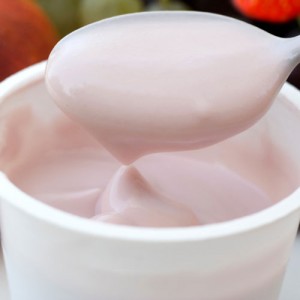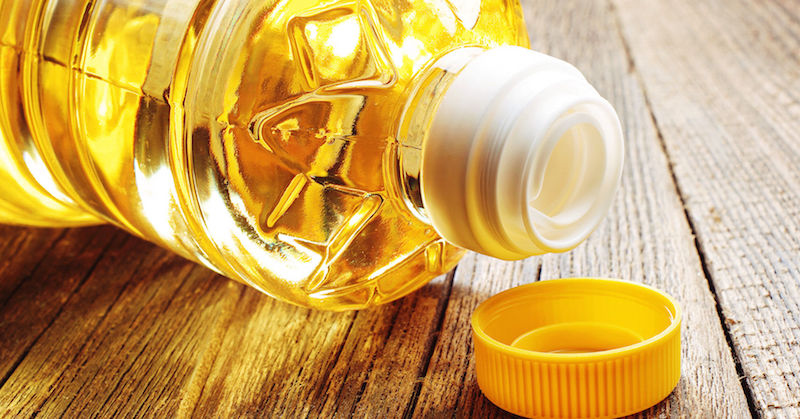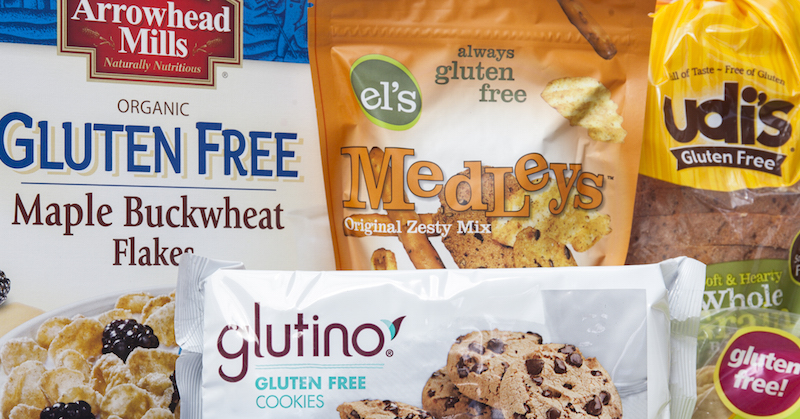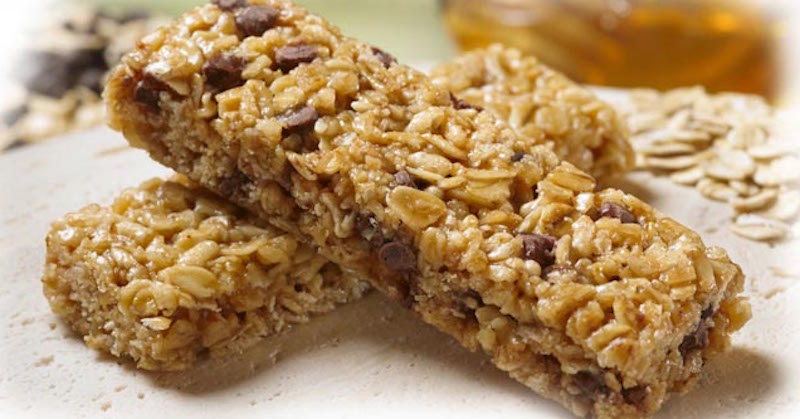Avoid These 12 Supposedly ‘Healthy Foods’ That Are Really Not Healthy
Last updated on
Looking for healthy food can be a challenge, especially since it is easy to be fooled by cleverly labeled foods. Not everything that you think is healthy may be as good for you as you think.
If you have had trouble losing weight, then perhaps the foods that you think are healthy are actually prohibiting weight loss. Not only that, it actually might be causing your body inflammation that leads to chronic diseases.
Here are 12 destructive foods that are usually thought of as healthy options.
1. Vegetable Oils
Vegetable oil is one of the first things I usually have my clients throw out when they come to me for help to revamp their eating habits. Although vegetable oil “sounds healthy” it is the number one killer that many people are not aware of. It should go into your never eat list.
Hand-in-hand with margarine, vegetable oils like canola oil are highly inflammatory and not healthy by any stretch of the imagination. They are usually genetically modified, are partially hydrogenated and have been linked to:
- Atherosclerosis
- Birth defects
- Bone and tendon problems
- Cancer
- Diabetes
- Digestive disorders
- Heart disease
- Immune system impairment
- High cholesterol
- Learning disabilities
- Liver problems
- Low birth weights
- Obesity
- Reduced growth
- Sexual dysfunction
- Skin reactions
- Sterility
- Vision reduction
I recommend pure, cold pressed, extra virgin coconut oil. To make sure you’re really getting the benefits of coconut oil, you should make sure the product smells like coconut when you buy it. Otherwise there’s a good chance it’s been pasteurized and is not as healthy for you.
2. Table Salt
Next thing on my list of things to replace is table salt. Pretty much everyone has heard that white table salt causes hypertension, yet that hasn’t stopped more than 95 percent of restaurants in the nation from stocking it on every table and food bar.
Originally produced from mined salt, refined table salt technically starts as a “real” food then quickly becomes fake. Manufacturers use harvesting methods that strip it of all its naturally-occurring minerals and then use a number of additives to dry it and heat it to temperatures of about 1,200 degrees.
Because it was destroyed, the naturally occurring iodine is then replaced with potassium iodide in potentially toxic amounts. The salt is then stabilized with dextrose, which turns it purple. Finally it is bleached white.
A much more healthier replacement is not even a replacement at all, but the original product! There are 12 reasons why you should change to Celtic sea salt and Himalayan salt today, and I recommend that you start using either in your cooking.
3. Gluten Free Foods
There is a growing interest in eating gluten-free, but there may not be any benefit to eating gluten-free, unless you have a gluten allergy.
New-comers to gluten-free foods may make wrong choices of gluten-free foods that have more sugar, fat, sodium, and calories than similar foods that contain gluten. Many gluten-free foods may also lack the nutrients found in their gluten-containing counterparts.
4. Energy And Granola Bars
Energy bars can seem like a good idea—providing you with a short burst of energy, but they can also lead to crashes. Some energy bars contain a large amount of calories and sugar. If you are looking for a healthy snack, instead of grabbing an energy bar, consider these suggestions of healthy snacks.
Granola bars often contains a lot of fat, sugar, and added calories. Even low-fat granola options often contain more calories that you would think. Take a look at the label of any granola that you buy.
5. Soy Protein
Contrary to popular belief, soy products are not healthy for you; at least, that is, unfermented soy. Fermented soy is one thing. But eating edamame, soy milk and soy protein is quite another.
Most soy grown in the U.S. is genetically modified to withstand applications of glyphosate, the active ingredient in the weedkiller Roundup. A recent Norwegian study found “extreme” levels of glyphosate in U.S. soy, meaning we’re eating weedkiller when we eat nonorganic soy. That’s a problem, given that glyphosate is linked to many health problems, including human cell death.
It’s generally accepted that long-term use of soy dietary supplements like soy protein is unsafe because it has been linked to the following:
- Allergic rhinitis (hay fever)
- Asthma
- Breast cancer
- Cystic fibrosis
- Endometrial cancer
- Hypothyroidism (under-active thyroid)
- Kidney disease
- Urinary bladder cancer
All of these reasons are great reasons why soy is definitely one of the health foods you should never eat.
6. Atlantic Salmon And Other Farmed Fish
Another health food you should never eat: Farmed fish that is mostly contaminated with mercury. Read here why you should avoid farmed fish such as tilapia. Be sure to avoid farmed salmon, too. It’s often called ‘Atlantic’ salmon or just salmon. Here’s how to tell the difference.
7. Factory-Farmed Meat
Essentially, you are what you eat, and if the livestock that you’re grilling up for dinner is cheap meat, chances are they were fed hormones, drugs and an unnatural diet grown using chemical pesticides and fertilizers, well, that’s not good news for you, either.
My recommendation is that you always purchase meat from a trusted local source. Get to know your food growers and ranchers. It’s worthwhile to become familiar with how your food is sourced and prepared. Ask the farmer if the animals are grass-fed and how they deal with sickness.
(For example, if they use drugs preventatively or only if the animal is at risk of dying.) If you’re looking for poultry, the gold standard is raised on rotated green pastures and supplemented with organic feed.
8. Margarine
You’d think that the “margarine myth” would have been put to bed years ago, but many people are still using it. The initial idea was that margarine was lower in saturated fats than butter, so it would protect heart health. But we now know that’s not true.
Sadly, trans fats were the original fats used in margarines. This is tragic, given that today, we now know trans fats are responsible for about 50,000 fatal heart attacks a year. Trans fat also increases someone’s risk of developing type II diabetes and several other severe health problems.
While trans fats have since been removed from most margarines, it’s important to note that most contain industrial, highly processed fats that would never be found in nature.
Alternatives: Choose butter or ghee from grass-fed cows. Or try coconut oil.
9. Salads
Salads, when they include fresh fruits and vegetables, can be a healthy meal, but when certain cheeses or fried meats are included, the salad can quickly become an unhealthy option.
Another issue is the salad dressing. Make your own healthy salad dressing with a simple mix of extra virgin olive oil and balsamic vinegar or apple cider vinegar. This is a good way to start. If you looked up reputable healthy sites, you may find many more healthy dressing recipes that you can easily put together.
10. Flavored Yogurt

An average serving of plain yogurt contains about 12 grams of fat, while flavored yogurt could include an additional 15 grams of fat.
If you want to eat yogurt, make your own, or choose plain yogurt or Greek yogurt.
11. Fat-Free And Low-Fat Milk
It’s time to stop being afraid of full-fat dairy. Researchers studied more than 18,000 women and found the ones who consumed more full-fat dairy were 8 percent less likely to be overweight or obese compared to the low-fat dairy group.
One theory is that eating full-fat dairy helps people feel fuller longer. Aside from that, low-fat and fat-free dairy products are often laden with added sugar, a potent risk factor for type 2 diabetes, heart disease and even cancer.
I also recommend choosing raw milk. That’s because when raw milk is pasteurized, it also loses a lot of its nutritional content. Because the enzyme lactase is destroyed in the heating process, people cannot properly digest the milk sugar, lactose.
In my opinion, raw milk is healthier and can usually be found in cheese or yogurt forms in local health food stores. I choose full-fat raw milk from goats or sheep whenever possible.
12. All-American Pancake Breakfast
Pancakes seem innocent enough. But when you look at the standard pancake mix at the grocery story (or in the back kitchen of a diner), you’d be appalled. Inflammatory hydrogenated oils and trans fats are still in some of the most popular pancake mixes in America.

Add to that that most syrups are loaded with high-fructose corn syrup, and it’s clear this breakfast needs a revamp.
Instead make your own much healthier pancake with this recipe. You can use the base of this to modify and make it different every time with real fruits.
These eight foods may not be as healthy as you imagined. If you want to start eating better, focus your attention on fresh fruits and vegetables.
References:
https://health.usnews.com/health-news/blogs/eat-run/2015/11/10/5-foods-that-sound-healthy-but-really-arent
Some of the links I post on this site are affiliate links. If you go through them to make a purchase, I will earn a small commission (at no additional cost to you). However, note that I’m recommending these products because of their quality and that I have good experience using them, not because of the commission to be made.
Comments
Leave a Reply




































 JOIN OVER
JOIN OVER
Limit the milk human bodies were not made to drink dairy milk from any animal. But milk from nuts like almond milk is something our bodies tolerate a bit better.